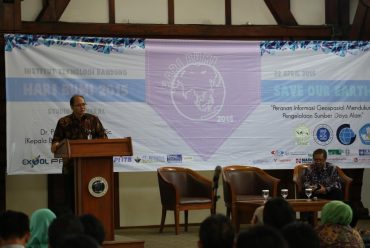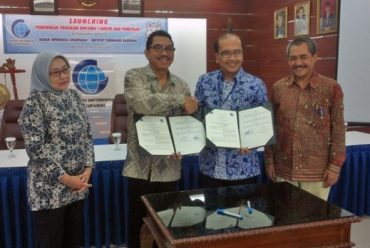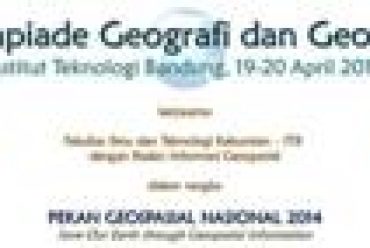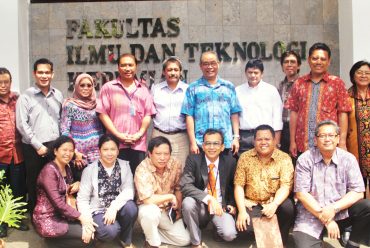Awareness of Disaster & amp; Geospatial By Ir. Ketut Wikantika, M. Eng, Ph.D
Bandung, fitb.itb.ac.id- back devastating earthquake struck Indonesia in West Sumatra and Jambi the end of September 2009. We learned a lot since then and the process continues until the emergence of mega-earthquake and tsunami that hit Nanggroe Aceh Darussalam (NAD ) 2004. Knowingly or not, the earthquake and tsunami NAD is a new starting point for Indonesia to improve itself. Picking up in anticipation of any disaster in an integrated manner. Yes, anticipating disasters in an integrated manner with the goal of reducing the impact of disasters that arise (mitigation).
disaster awareness
Indonesia is listed as one of the most disaster-prone countries in the world. Earthquake, tsunami, volcanic eruptions, floods, landslides are a disaster “subscription” that swept across the region, from Sabang to Merauke. Indonesia’s strategic position between two continents, Australia and Asia, the two oceans are the Pacific Ocean has always been a “pride” summary that “embedded” in the lessons in elementary, junior high, high school and even in college may be related to the geographical position of Indonesia. Immediately cultivate understanding shows Indonesia “rich” disaster. This is not in order to frighten the nation but rather enhance awareness of the wealth of their country would be a disaster (disaster awareness).
The emergence of such disasters megagempa of the order of hundreds of years of repetition can also be a period of time in building a new culture. The new culture is aware of the disasters around the place and culture how to avoid disasters (mitigation awareness), not against disaster. Avoid means to conduct systematic ways to reduce the impact of disasters, material and nonmaterial. How do people realize that the area is very vulnerable to earthquakes and understand what happens if the power is very powerful earthquake struck them? This can all be done through the process of formal and informal education. Although education took a long time and great expense but only with pendidikanlah understand why they should be aware of so many disasters “stalking” them.
Geo-spatial awareness
In addition to understand the importance of disaster awareness, the public must also understand the “characteristic” residence and place them on the move. The simplest is the house where they were? What is in the A side of the house, near the river, near the cliff, near the shopping center, located in the hills, and so forth. This is called the understanding and position location (geo-spatial) region. Since the earthquake and tsunami struck Aceh, NAD society into Indonesian people most aware of the importance of geo-spatial data in disaster management process, from the process of evacuation, displacement of population to another location (relocation) even to the rehabilitation and reconstruction process.
How to lead the people of Indonesia in order to have a geo-spatial awareness? This can be done through education. Still remember the cartoon “Dora the Explorer”? The substance of the film is basically education. “The map … a map … a map” so often heard of the film. Yes, the map is a form of geo-spatial products. Map can “talk” about the location and position of the area, maps can speak more than thousand words. Geo-spatial awareness is needed by the people of Indonesia.
In the context of technology, the development of geo-spatial data production has enormously. But more important is how people can learn and build unity in the face of disaster. Community based disaster awareness is what needs to be built in a systematic and sustained in Indonesia.
One example of the Japanese community in the city is the urban population Nishiki. Nishiki city can be called “village” because the population is only about 2,200 people situated in a small valley bottom and at the end of the bay leading to the Pacific ocean. Several times an earthquake hit the city over M7,0 Nishiki. The last mega-earthquake hit this small town occurred on September 5, 2004 with M7,4 strength. So great “award” given population against disasters ever to hit them. They remember all of it in the form of a document that is recorded with a neat, objects remaining from the raging disaster neatly framed in a story in the museum, even give signs on every corner of the city is reminiscent of how high the water that soaked their city. The approach is very simple but it makes people become so embedded memory and learning a new culture in each of the heart. Not to mention the form of the approach taken towards toddlers and elementary school.
We need to imitate Japan in instilling important values in life, including building a new culture, a culture that is responsive to the disaster through the awareness of disaster (disaster awareness) and awareness of geo-spatial (geo-spatial awareness). Hopefully.***
Authors, Indonesian Remote Sensing and GIS Forum (RSGIS Forum); Indonesian Society for Remote Sensing (Mapin); Remote Sensing and GIS Research Division, Faculty of Earth Science and Technology (FITB) ITB; Center for Remote Sensing (CRS) ITB.
Source (http://newspaper.pikiran-rakyat.com/prprint.php?mib=beritadetail&id=103989)







No Comments